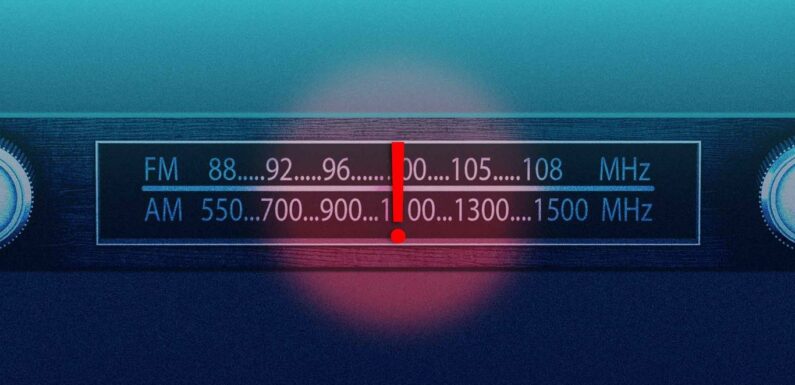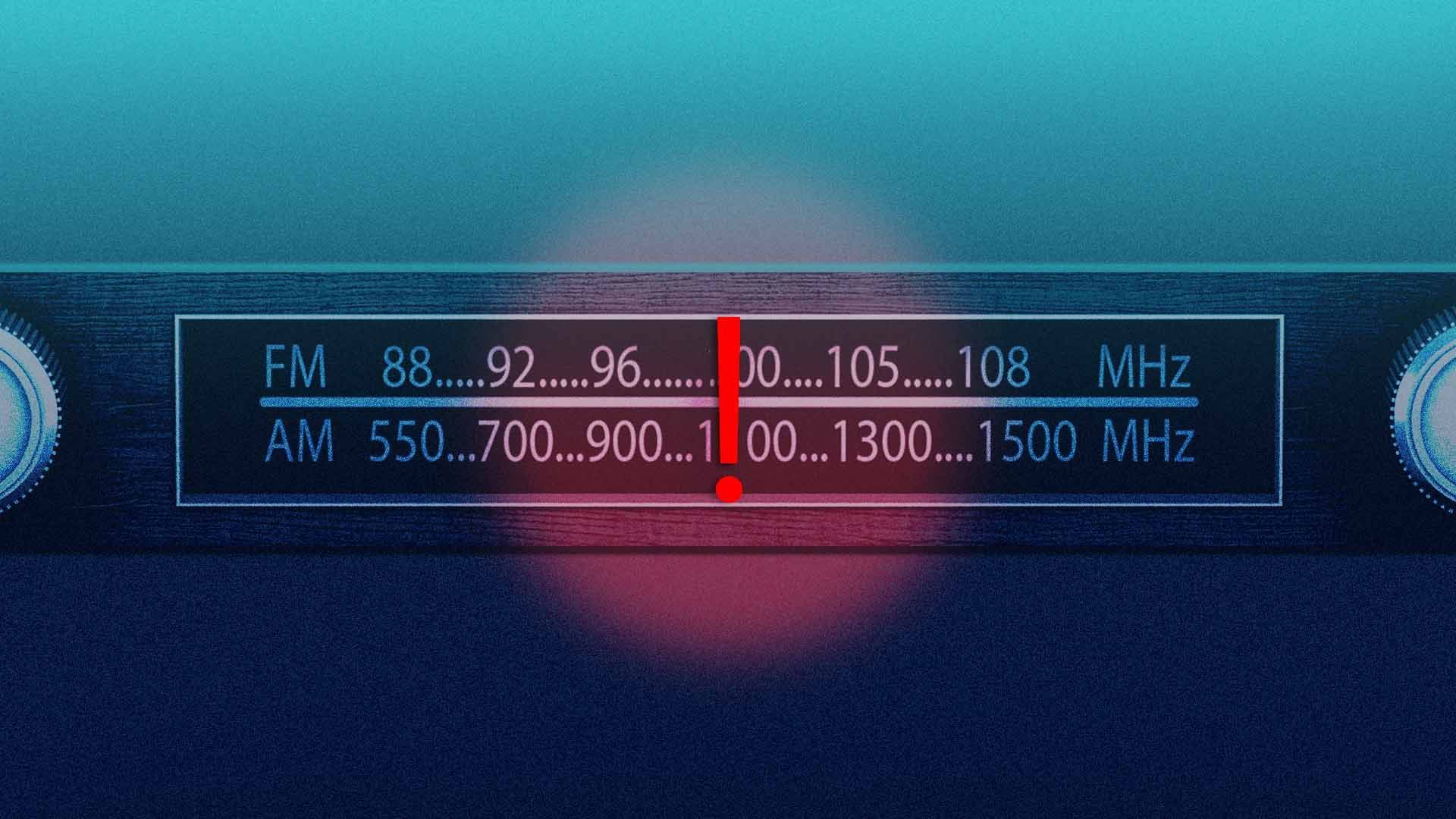
Illustration: Sarah Grillo/Axios
Some electric vehicle (EV) manufacturers are eliminating AM radios from their cars, which government officials fear could put people at risk in an emergency.
Why it matters: AM radio is one of the critical ways that federal, state, and local officials communicate with the public during natural disasters and other emergencies.
- If drivers don't have access, they might miss important safety alerts.
What's happening: Automakers say EVs' electric motors interfere with AM frequencies, creating annoying buzzing noises and faded signals.
- Sen. Ed Markey (D-Mass.), a member of the Commerce, Science, and Transportation Committee, wants car companies to maintain free access to broadcast radio as a public safety measure.
- Seven former Federal Emergency Management Agency (FEMA) administrators also raised the issue in a recent letter to Transportation Secretary Pete Buttigieg and several congressional committees, per the Wall Street Journal.
The other side: Automakers say consumers are moving away from radio and television for news and information, and so the government's emergency management system needs to adapt to new technologies, too.
- Those that have dropped AM radio say customers can still access transmissions in other ways, such as through digital streaming packages or Bluetooth connections to smartphone apps (though such services sometimes require a subscription).
- The trade association Alliance for Automotive Innovation also points out that FEMA's public warning system is designed to provide redundant alerts across multiple outlets: text messages, the Emergency Alert System on radio and television stations, and the National Oceanic and Atmospheric Administration's weather radio.
- "The intent is not for the public to rely on one sole source to receive the alerts but to create a 'net' of sources in which the public can receive them," Garrick Francis, vice president of federal affairs for the alliance, wrote in a letter to Markey.
Yes, but: "Although many automakers suggested that other communication tools — such as internet radio — could replace broadcast AM radio, in an emergency, drivers might not have access to the internet and could miss critical safety information," says Markey.
- "The truth is that broadcast AM radio is irreplaceable."
By the numbers: Terrestrial radio (both AM and FM) reaches 92% of the U.S. population, more than any other medium, according to media tracking firm Nielsen.
- Nearly 50 million people listen to AM radio, according to Nielsen figures provided by the National Association of Broadcasters.
Where it stands: Of the 20 automakers surveyed by Sen. Markey, eight — BMW, Ford, Mazda, Polestar, Rivian, Tesla, Volkswagen, and Volvo — have removed AM radio from their EVs.
- Ten others — Honda, Hyundai, Jaguar/Land Rover, Kia, Lucid, Mitsubishi, Nissan, Stellantis, Subaru, and Toyota — still have it.
- General Motors and Mercedes-Benz deferred to the alliance's response.
The intrigue: While the problem of radio band interference is broadly acknowledged, only a few carmakers have taken steps to mitigate it.
- Stellantis, parent of Chrysler and Jeep, for example, uses shielded high voltage cables and connectors to cut down on interference. It's also moving the radio receivers farther from the EV components in its next-generation infotainment systems.
- Volkswagen, on the other hand, said such solutions have a significant impact on the range and performance of its EVs, due to the extra weight.
The bottom line: You may not have tuned into your AM radio in years, but the tech isn't dead yet.
Source: Read Full Article
